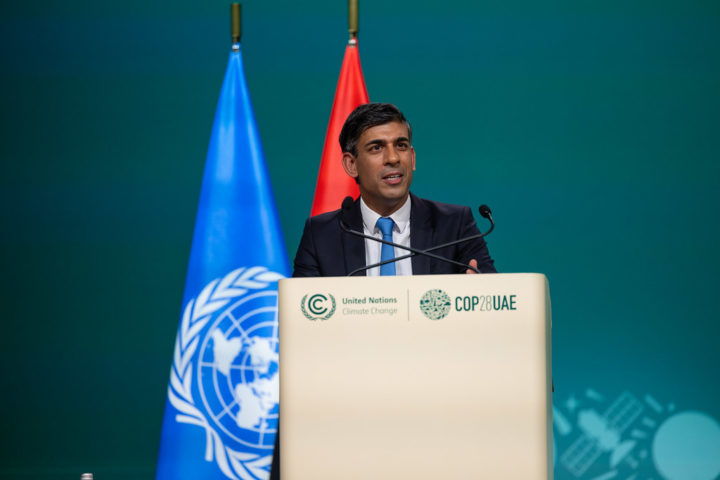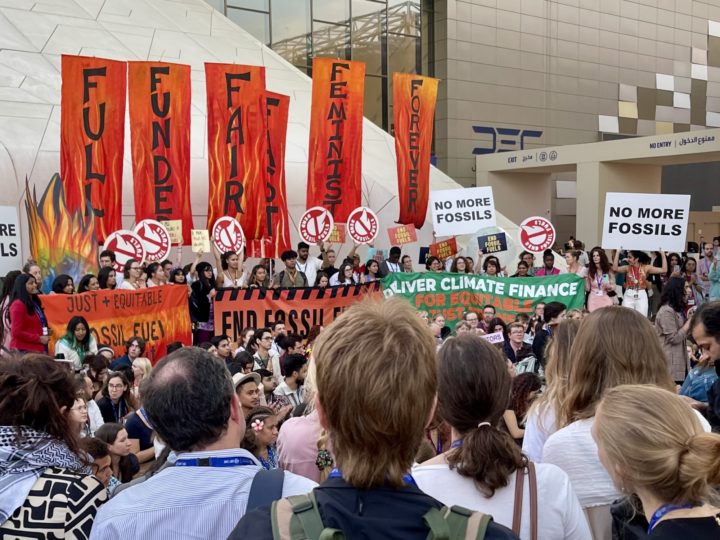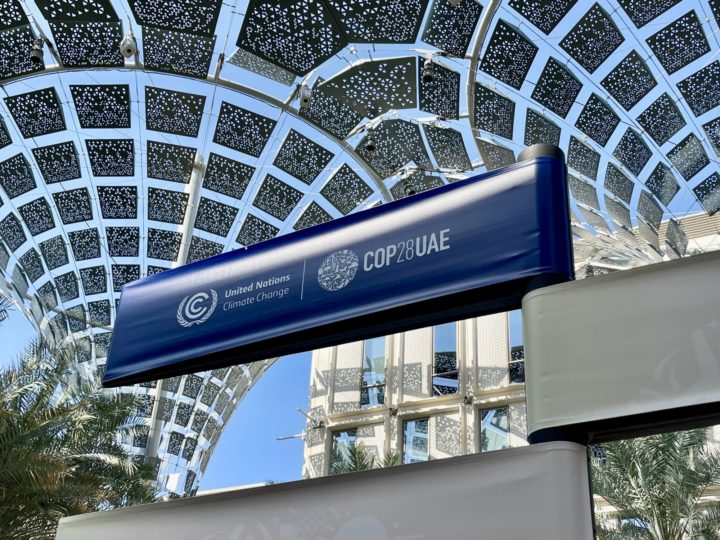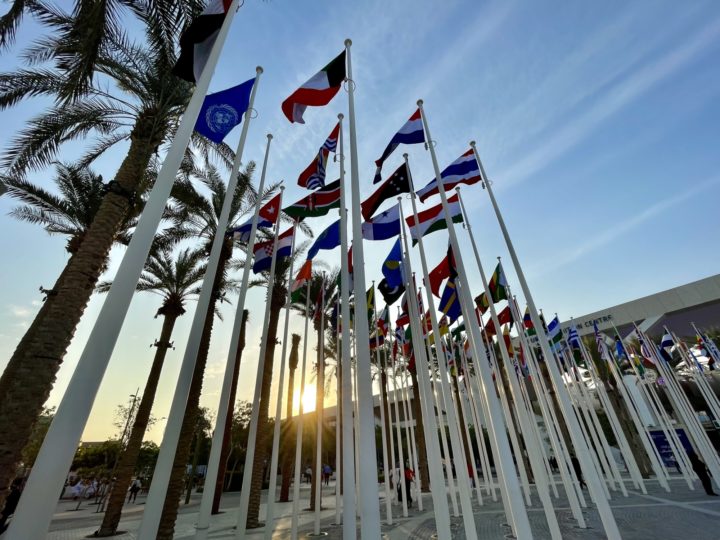COP28 Dubai - what was achieved and not?
Now COP28 in Dubai has drawn to a close, we take a look at the good, the not so good, and the unresolved.

By Gareth Redmond-King
@gredmond76Share
Last updated:
The outcome from a UN climate summit is rarely straightforwardly good or bad. Each year, after an exhausting couple of weeks, we pause and look back on another COP outcome, attempting to decide whether it was worth the investment of time and carbon, of diplomatic and geopolitical capital. So, broadly, what was achieved, and what was not achieved.
✔️ LOSS AND DAMAGE FUND
Procedurally
Establishing the loss and damage fund set a powerful tone for the rest of the COP. It was achieved ahead of the COP, and the mechanism itself gavelled through on day one, invulnerable to disagreements later in the fortnight.
Tangibly
It is an important and necessary mechanism. As the IPCC warned, climate impacts are worse than expected, and worsening rapidly as temperatures rise. The hottest year on record, 2023 has demonstrated those impacts in spades. Costs are spiralling for the most climate vulnerable nations, and increasingly the poorest on the planet are being forced to choose between paying to recover from climate disaster, and funding core public services. Once properly capitalised, and provided temporary administrator, the World Bank, can get the money out of the door quickly to those who need it, this becomes a tangible global public good.
Symbolically

The initial capitalisation of the fund during COP establishes an important principle. Initial pledges were relatively small in the face of the growing need; by the time the gavel fell on Wednesday, it was somewhere north of $700 million. But the first to contribute was COP host, the United Arab Emirates; by the rules of the Paris Agreement, not a country in the category of those expected to pledge to climate finance and related funds. But a wealthy nation with the means to contribute, they set the tone for contribution based on ability.
They were rapidly followed by a slew of major economies, including all of the G7 nations, establishing the principle that wealthy developed nations should contribute to support poorer, developing nations with the costs of climate disaster. The UK, whose officials have been at the forefront of the work to establish the fund, was one of those major economies; Conservative Prime Minister Rishi Sunak arrived in Dubai with an initial $40 million to put into it, to endorse the fund and the principle.
✔️ SIGNALLING THE END OF THE FOSSIL FUEL ERA
There was a sense in week two of momentum towards ambitious language on fossil fuel phase out. Around 100 parties were backing it, including major economies and emitters the EU and US. Even China, who had said it was impractical, shifted language to talk about replacing fossil fuels with renewables – which is precisely what their phenomenal levels of investment in clean energy is doing in China; likely to see their emissions peak in 2024.
The penultimate day of scheduled proceedings appeared to drive a coach and horses through that, with a draft text Al Gore said could have been dictated by the major oil-producing nations, OPEC. In broad terms, it very much left it up to parties as to how much, or even whether, they might one day turn their attention to fossil fuels as a bit of an issue for climate change!

Transitioning
Yet by the morning of the 13th day, with COP into overtime, a better text emerged that talked of ‘transitioning away from fossil fuels for energy systems … in keeping with the science’, included in a list of things which ‘called upon’ parties to contribute to through their nationally determined contributions (NDCs) under the Paris Agreement. Barely four hours later, that text was gavelled through by COP President Dr Al Jaber.
False and future solutions
The energy transition section of the text does, it is true, also contain some of the fossil fuel companies’ and states’ greatest hits – carbon capture and storage (CCS), low-carbon hydrogen (not green, which is zero-carbon), and reference to transitional fuels (which can mean gas). These are variously future and false solutions in a global stocktake that’s about closing the considerable emissions gap this decade.
With CCS currently capturing just 0.01% of global emissions, and the biggest existing plant dramatically under-performing by only removing half the emissions promised, this is a solution that would cost an eye-watering $1 trillion a year to remove enough emissions to enable continued fossil fuel use as now. It is neither affordable nor scalable in this decade, although it is a part of net-zero pathways in future decades. Similarly with hydrogen, most production now uses fossil fuels, therefore contributing to emissions; there is vanishingly little green hydrogen production globally, and it has no credible role in some of the most significant decarbonisation challenges, like home heating and most road transport.
Strong signals
But historically, this is the first time that a UNFCCC COP decision document has included the ‘f’ word; coal has been mentioned, in a commitment to phase it down at Glasgow’s COP26, but never fossil fuels. And, for the first time, fossil fuel subsidies get a look-in as something the parties are called on to phase out (well, ‘inefficient’ ones that don’t address energy poverty or just transition).
This sends a powerful signal to markets and investors globally that fossil fuels are on their way out; that renewable-tripling and energy efficiency rate-doubling represent the future of energy. Which means that, if as many of the 100+ high ambition nations as can, put their policy and investment where their ambition is, then the existing global momentum towards clean transition can only increase, at pace.
❓ 1.5°C AND SCIENCE

It remains to be seen whether enough will be done, in time, to limit heating to 1.5°C in time. The UNEP emissions gap report put the chances at 14%. Week one pledges only close just under a third of the 2020s gap, if delivered. Everything else is even more of an ‘if-delivered’ question, relying on parties not just putting this agreement to work to offer more ambitious pledges ahead of COP30, but acting to achieve them quickly. However, leaders at the outset of COP, and decision text at the end, continued to foreground the science and commit to 1.5°C as the goal. The text linked the transition away from fossil fuels to the science, and referred to emissions cuts of 43% this decade, and 60% by 2035 – in line with IPCC calculations.
❓ ADAPTATION
Adaptation negotiations did not go well, and there was little momentum. The global goal on adaptation should have, in essence, produced the world’s guide and toolkit for adapting to worsening climate impacts. Instead, it produced principles and themes and aims, but very little by way of money and mechanisms. Adaptation is important everywhere, but financial and technical support are particularly in need by poorer, developing nations of the Global South. It therefore remains something of a bone of contention, needling at trust at the heart of talks for there to have been only partial progress in Dubai.
❓ MONEY
There were record pledges to the Green Climate Fund before, and during COP28. This included £2 billion from the UK, from within their £11.6 billion climate finance commitment. But there was very little contributed to the adaptation fund, even as the loss and damage fund saw over $700m in initial pledges; the irony being, of course, that when we don’t invest to adapt to climate impacts, we incur greater loss and damage costs instead.
And increasingly, many nations – including hosts, UAE, and the UK – are experiencing climate impacts to their supply chains, from afar. In a globalised world, extreme weather causing damage to crops in one nation leads to food shortages and price rises in many others. And in the UK, we import around half our food. Half of those food supply chains are in climate impact hotspots, and around 16% of our imports come from nations with the lowest levels of resilience to climate shocks. Adaptation and resilience matter for our food security.
❌ CARBON TRADING
Article 6 of the Paris Agreement relates to carbon markets and trading emissions, including between nations. Its negotiation is plagued with complexity; getting it wrong can risk undermining the whole international process of accounting for emissions cuts. Once again in Dubai, texts emerged which would have left emissions trading taking place in a black box, in effect – no proper standards, transparency or accountability. So, in the spirit of no-deal being better, and less dangerous, than a bad deal, the issue is remitted to mid-year meetings in Bonn.

❌ FOOD AND AGRICULTURE
Also remitted to Bonn – at the end of week one – was work on food and agriculture. Observers were left frustrated at blocking tactics that, in effect, delayed progress until the next COP, in Azerbaijan. This despite the food system being both a major driver of climate change and biodiversity loss, and majorly affected by climate change, threatening health outcomes and cost of living issues in many parts of the world.
MOMENTUM
The Paris Agreement set serious work to limit dangerous levels of temperature rise in train at COP21. The momentum built from there, through NDC revisions ahead of COP26, has driven falling costs for clean energy, allowing businesses delivering the transition to boom, creating jobs and growth.
Developing nations need more help to benefit from that, and wealthy developed nations have been slow to deliver since they promised $100 billion a year in 2009. But net zero industries are worth £70 billion a year to the UK, responsible for 840,000 jobs. Increasingly those businesses look to the outcomes of a global meeting like this to see where they can invest further – not just at home, but overseas, including in emerging markets. The mitigation and just transition work programmes from COP28 should be the guidebook for this now.
All of which could well now be spurred on to greater momentum by the strongest signal from COP28 – that the era of fossil fuels is coming to an end. The work to be done in Baku will be substantial, particularly on money. But the next major stride forward ought to come in Brazil, with the country NDCs that should deliver on the promises enshrined in the deal which was done in Dubai.
Share